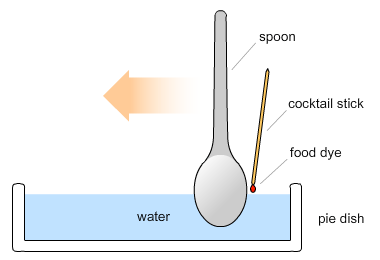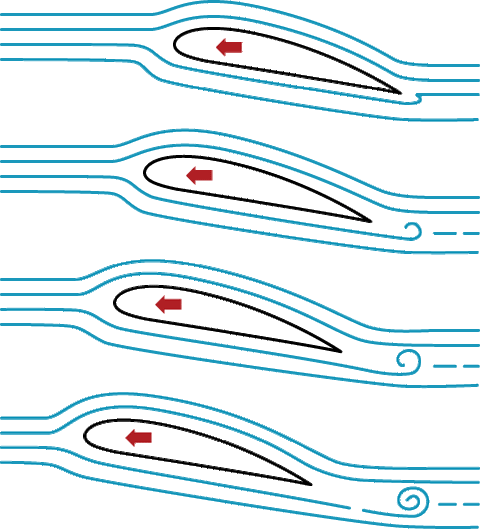Why does the air flow more quickly over the top of the of the aerofoil? To understand why this happens you are going to have to look at what happens in the first moments as the air begins to move around the aerofoil. You are also going to have to think of moving air as behaving like a fluid. It might be a good idea to fit in a fluid dynamics course at this point, but as an alternative you can try a simple experiment.

Position a flat (low-camber) soup spoon in a tray of salted water as in the diagram, and use a thin stick to place a drop of food colouring on its trailing edge. Turn the spoon to a low angle of attack, move it quickly to the left, and you should now see a starting vortex rotating in an anti-clockwise direction.
It is difficult to think of of air as having a viscosity or 'thickness', but moving air does and this internal friction changes the way that it moves past surface edges, such as the sharp trailing edge of the aerofoil. This diagram shows the successive stages in the development of the starting vortex.

The experiments that led to the development of the famous Foker Triplane of the First World War with the first thick aerofoils were based on this circulation model of lift.
![]() wing profile used by Lilienthal, the starting point for the Wright Brothers
wing profile used by Lilienthal, the starting point for the Wright Brothers
![]() Gottingen wing profile used on the Foker Triplane of 1917
Gottingen wing profile used on the Foker Triplane of 1917